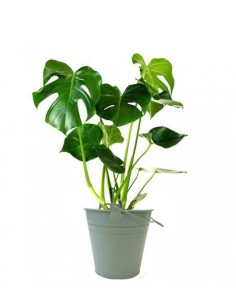- Green Lifestyle
- 59518 views
- 0 comments
Can house plants with low light live well? Yes, they can all right! Often our homes or offices are in places where sunlight is not as plentiful. But the green corner is increasingly desired and many ask us for advice, so here is which plants you can create without having to worry about how much light it receives!
The Calathea are among the first to suggest you: they are particularly striking indoor plants, thanks to their colorful leaves that are almost always native to the tropical areas of the world, in particular Africa and South America. They are therefore particularly attractive from an aesthetic point of view thanks to their variegations. The calathea is present in many varieties and among the most interesting we find the Calathea Flamestar and the Calathea Lancifolia, very different in appearance but which share the care they require, including the fact that they thrive well even without too much lighting.
The timeless Ficus will not disappoint you: in particular the Ficus Benjamin, among the most used as an indoor ornamental plant in the Italian apartments is at ease as an indoor plant that lives in low light. If you expose the Ficus Benjamin in a bright room it will grow more, but if you miss it you will not have problems: it will give the best of itself!
Aglaonema cutlas: it is not by chance that it is also called "the plant of the dark" as it is capable of surviving very well even with very poor light conditions. In addition to this property, this plant is an excellent air purifier and has some delicate streaks on the upper part of the leaves, intriguing for those of you who want something different from the "usual" houseplants.
Philodendron: these now widespread indoor plants are extremely scenic thanks to their leaves with a bizarre shape, especially in the variety "Philodendron monstera deliciosa" or "monkey mask": in the wild they grow in the undergrowth, so they are used to receiving little light: sure they will not break if sometimes you forget to open the balcony!
The ferns: also in their native environment they remain for long periods in conditions of diffused light or even in the shade: we think of the fact that they grow in abundance in the tropical forests or in our woods, where the height of the trees comes to shield for many hours a day the sun. For example, an Asplenium could be the right choice: it is among the oldest ferns known and in nature is epiphyte, or lives on the branches of other plants, which provide an almost permanent shadow. Have you ever wondered why the ferns are often placed in the bathroom, where the brightness is poorer the humidity is higher than in other rooms? This is necessary to recreate an environment similar to their forest habitat as much as possible.
Among the light-resistant house plants we also find Dieffenbachia: it adapts easily to many interiors and, even if it develops better in a bright room, it does not disdain the conditions of shade. Like the Ficus, the Dieffenbachia has very pleasant pale streaks on the surface, which interrupt the underlying green almost as if they were painted.
Remember that even indoor plants like Spathiphyllum are not far behind! At our latitudes Spathiphyllum is cultivated only in closed places, because it fears the cold and does not withstand nighttime temperatures below 12-15 ° C. It bears well even an apartment with little light, which will allow it to exercise one of its primary functions, that is to purify the air we breathe. Its white spathe is particularly curious and resists several weeks.
Finally, the Dracena also responds well to your question about which plants are indoor for areas with low light: it is not bulky, beautiful to look at, and in addition to a light pruning and the soil always wet, requires nothing else: if the room it's a bit dark it will resist well and will certainly make it more lively, especially if you are orientated on varieties like the Dracena Lemon lime or so-called "trunk of happiness".
Did we give you some ideas? Now you have no more excuses for not having plants at home!



Comments (0)